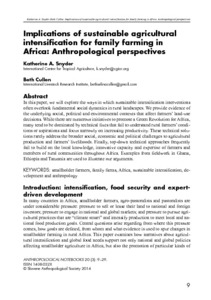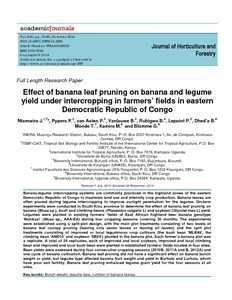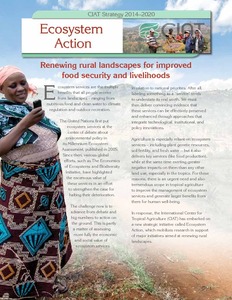Mission
To reduce hunger and poverty, and improve human nutrition in the tropics through research aimed at increasing the eco-efficiency of agriculture.
People
CIAT’s staff includes about 200 scientists. Supported by a wide array of donors, the Center collaborates with hundreds of partners to conduct high-quality research and translate the results into development impact. A Board of Trustees provides oversight of CIAT’s research and financial management.
Values
- Shared organizational ethic
- We respect each other, our partners, and the people who benefit from our work. We act with honesty, integrity, transparency, and environmental responsibility in all of our joint endeavors.
- Learning through partnerships
- We work efficiently and pragmatically together and with partners. Considering our diversity to be a key asset, we adapt readily to change and strive to improve our performance through continuous learning.
- Innovation for impact
- We develop innovative solutions to important challenges in tropical agriculture, resulting in major benefits for the people who support, participate in, and profit from our work.
Members:
Resources
Displaying 266 - 270 of 958Implications of sustainable agricultural intensification for family farming in Africa: anthropological perspectives
In this paper, we will explore the ways in which sustainable intensification interventions
often overlook fundamental social dynamics in rural landscapes. We provide evidence of
the underlying social, political and environmental contexts that affect farmers’ land-use
decisions. While there are numerous initiatives to promote a Green Revolution for Africa,
many tend to be dominated by technical fixes that fail to understand rural farmers’ condi
-
tions or aspirations and focus narrowly on increasing productivity. These technical solu
-
Identifying determinants, pressures and trade-offs of crop residue use in mixed smallholder farms in Sub-Saharan Africa and South Asia
Crop residues (CR) have become a limited resource in mixed crop-livestock farms. As a result of the increasing demand and low availability of alternative resources, CR became an essential resource for household activities, especially for livestock keeping; a major livelihood element of smallholder farmers in the developing world. Farmers’ decisions on CR use are determined by farmers’ preferences, total crop production, availability of alternative resources and demand for CR. Interaction of these determinants can result in pressures and trade-offs of CR use.
Effect of banana leaf pruning on banana and legume yield under intercropping in farmers' fields in eastern Democratic Republic of Congo
Banana-legume intercropping systems are commonly practiced in the highland zones of the eastern Democratic Republic of Congo to maximize land use and intensify crop production. However, banana leaves are pruned during legume intercropping to improve sunlight penetration for the legume. On-farm experiments were conducted in South Kivu province to determine the effect of banana leaf pruning on banana (Musa sp.), bush and climbing beans (Phaseolus vulgaris L) and soybean (Glycine max L) yield.






